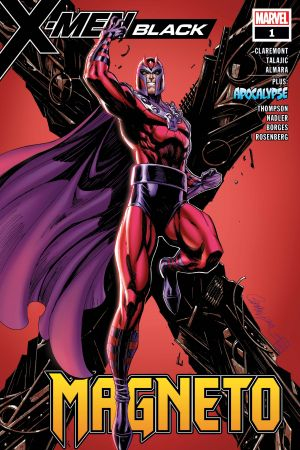In the opening lines of X-Men: Black – Magneto #1 the mutant villain sums up his problem with the world. “The world is so beautiful, the people who inhabit it less so.” The Magneto we see in the Gold Star Café in a dusty little town in Texas doesn’t look like the criminal that fans have seen before. Magneto—or Erik, as he introduces himself to Kate the waitress— looks like a nice old man, who is enjoying his retirement days.
Appearances can be deceiving. Kate’s sympathy to Erik after noticing the concentration camp tattoo on his arm leads to a friendship. When Erik gets into a verbal discussion with café patrons about how terrible the recently opened prison camp for child mutants nearby is, it is Kate who resolves the fight before it happens.
He wasn’t just there for coffee and conversation. Magneto heads out of town to the remote prison and attacks. After a brief battle, Magneto frees the kids and lectures the guards for imprisoning children.
My Opinion
It is hard to like a villain, but it is harder to disagree with a villain when they make sense. Erik Lehnsherr, Magento, is the villain, but at the same time, a reader can identify and empathize with the man. Having survived the Holocaust, and no matter how hard he has tried to live a normal life, Magneto is constantly found out and cast out of society. The man has only wanted to live peacefully, but Magneto is seen to be a threat and is forced to hide himself from society.
In X-Men: Black – Magneto #1 we meet a kindly old gentleman who is also one of the most powerful mutants in the world. His crimes, misdeeds, and good acts are legendary, but the man we meet in the Gold Star Café, is a man who is tired of the world that mistreats people because they are different.
Magneto survived one of the most brutal moments in modern history, the Holocaust. The murder of millions because they were Jewish left a definitive scar on the character of Erik Lehnsherr. That scar has caused him to act out in violent ways.
Magneto has come to a prison in a remote corner of Texas to free kids who are suspected mutants, and though he may look older and frail, he can still kick butt. Despite being hurt during the battle at the prison, he is successful.
What writer Chris Claremont did that made this story perfect, was introducing a brief second act that took place 24 hours prior to the current events. Here on his remote asteroid, we see Magneto practicing his battle skills against simulation X-Men without safety limits. He might be older, but Magneto is still capable of fighting.
Magneto has always been focused on the idea of uniting mutants in a battle against humans, and in this comic too, we see Magneto say to the kids that they need to leave with him. Writer Claremont takes the opportunity to show that all people who are treated poorly because they are different from the majority, do not turn vengeful instantly.
The kids even take the opportunity to lecture Magneto that the United States was founded on certain ideals and that people have been dying for decades to preserve those rights. Maybe it is their time to fight for those rights.
By the end of the comic, Magneto has sent a thank you letter to Kate for offering him hope. Beneath the surface of this peaceful veneer that seems to take hold throughout the comic, there is a definitive force that is looking to exploit the weaknesses of others, for the perfect moment to strike, and Magneto should be on the lookout.
I give X-Men: Black – Magneto #1 4 magnets out of 4. For intense action, a crisp narrative that uses story elements that were most surely inspired by current events, and for humanizing Magneto. Entertaining throughout, and the set up for an exciting series to come, Magneto is in great writing hands, and filtering the real-world stories of today into the comic verse will only make this storyline even more powerful and relevant. The X-Men Black series has started with a home run, I look forward to more.

